Forensic Anthropology & Teeth
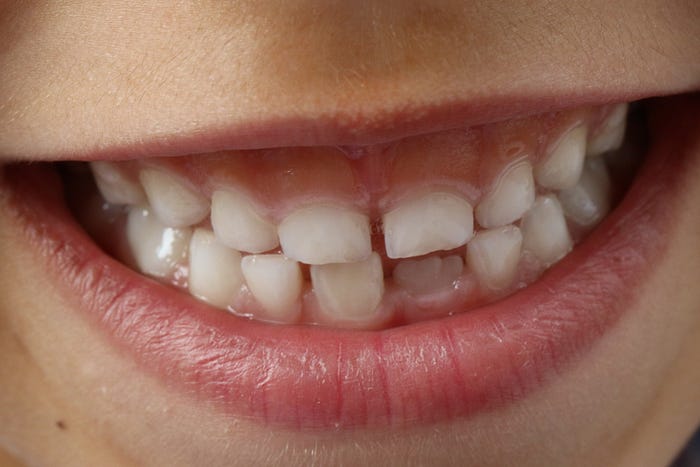
Teeth. We all have them (or had them at some point), but how much do you know about them? This blog post will focus on teeth, including the numbers and kinds of teeth we have, and the importance of teeth in Forensic Anthropology.
Where did teeth come from?
Did you know that our teeth seemed to have evolved from fish scales? Cool, right? If you want to learn more about this, check out this article from National Geographic.
What kinds of teeth do humans have?
Humans have 4 kinds of teeth:
- incisors
- canines
- premolars
- molars
Incisors are flat blade-like teeth, with sharp thin cutting edges. Here is an example of an adult incisor:
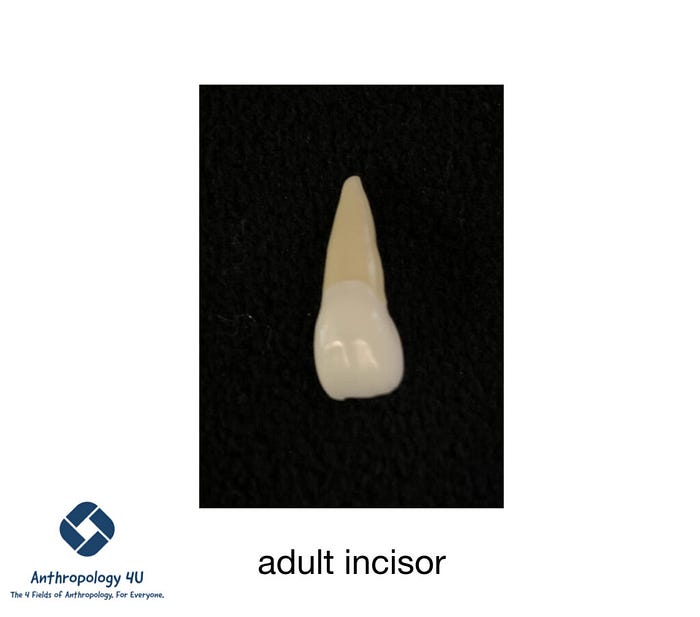
Canines are sharp pointy teeth used for biting food. Here is an example of an adult canine tooth:
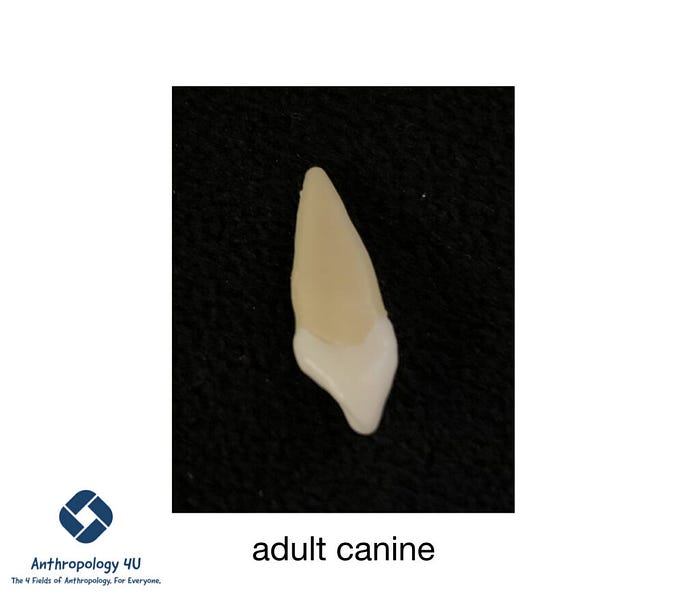
Premolars are also known as bicuspids and have at least 2 cusps, which are elevations in the surface of the teeth. Premolars are used for grinding food. Here is an example of an adult premolar:
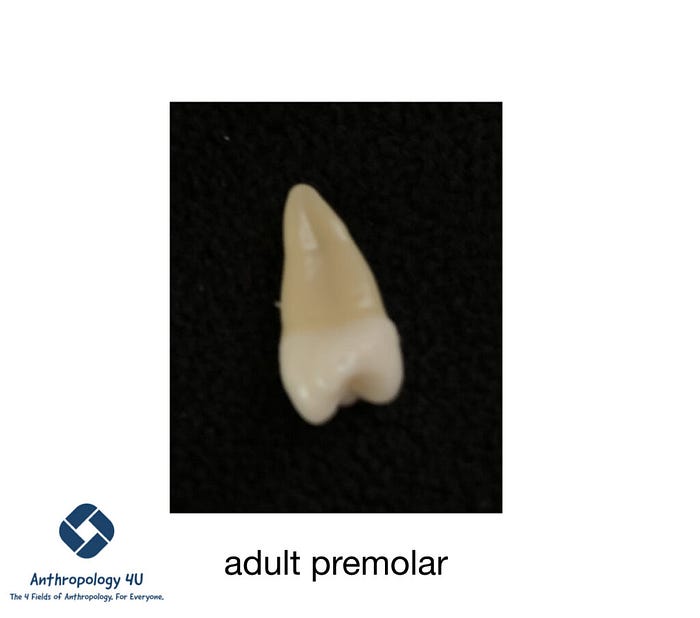
Molars are flattish teeth at the back of the mouth. They are used for grinding food. Here is an example of an adult molar:
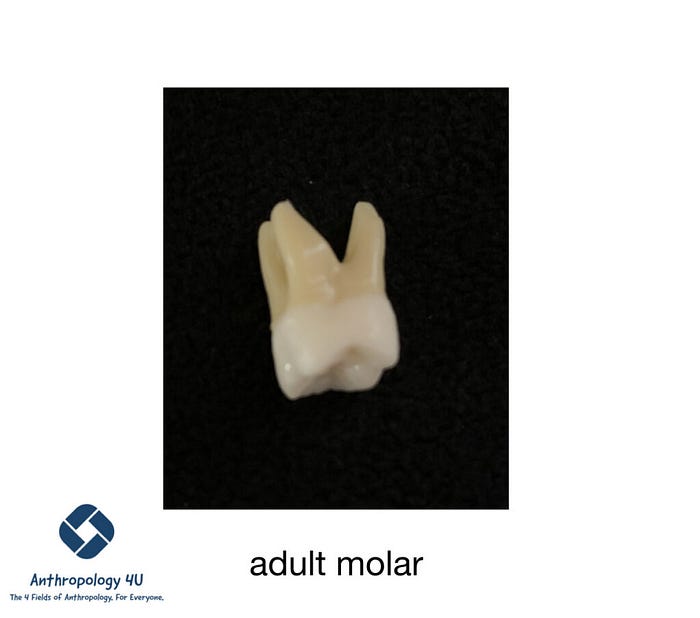
Here’s an image of all the teeth in place in the mouth. You can see the incisors, canines, premolars, and molars, in both the upper and lower jaws. The upper jaw is called the maxilla, and the lower jaw is called the mandible.
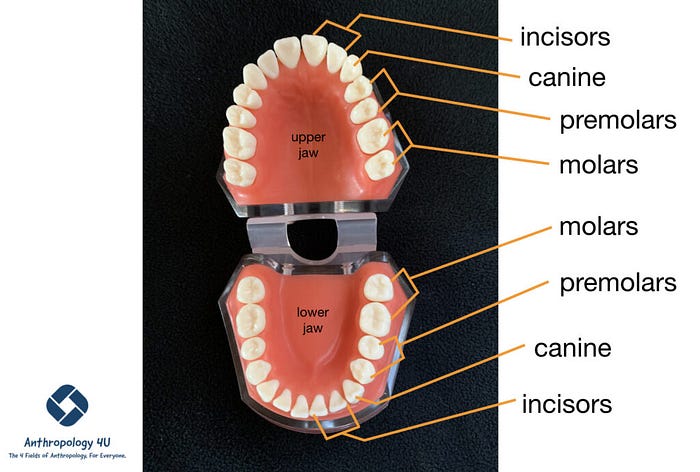
How many teeth do humans have?
Adult humans usually have 32 teeth, called permanent or secondary teeth. There are 8 incisors, 4 canines, 8 premolars, and usually 12 molars, but some people are missing one or more of the last molars (also known as the wisdom teeth). Children usually have 20 teeth. These teeth are called deciduous teeth, or primary teeth.
What is the structure of a tooth?
Teeth may seem simple, but there are many parts to a tooth. The anatomy of a tooth is shown in this image below. (link to image license)
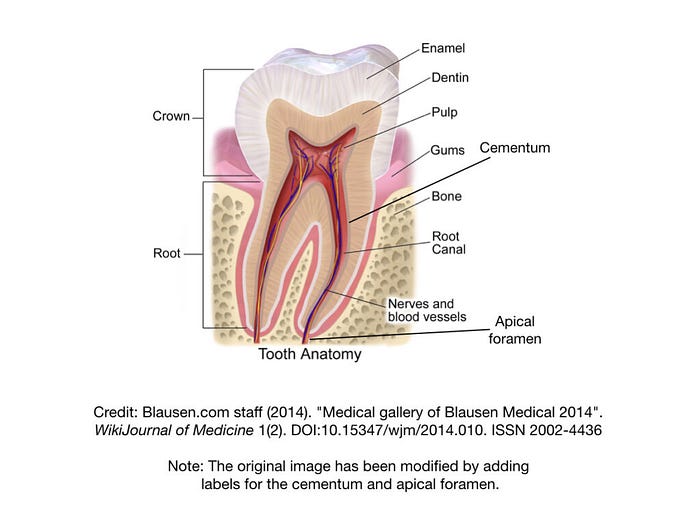
What is the importance of teeth in Forensic Anthropology?
Teeth may not seem too important, but they are very useful in Forensic Anthropology, especially because they can help identify an individual.
For example, teeth from a skeleton can be compared to dental records, and potentially identify the deceased individual. Say there is a missing person who has had dental work done, such as a dental bridge. And, you find a recently deceased skeleton that has evidence of a dental bridge in the same place in the mouth, then you may have found your missing person.
As another example, teeth can help determine a person’s age. I’ll focus only on subadult (child) skeletons in this post. Deciduous teeth grow in and fall out at certain ages, so they can be used to estimate the age of a child’s skeleton. Say that you found a skeleton with dentition that matches the image below. Note that the teeth growing under the gum are exposed in this image so that you can see them. And, I am only focusing on the lower jaw for simplicity. In real life, you would consider the dentition of the upper jaw as well.
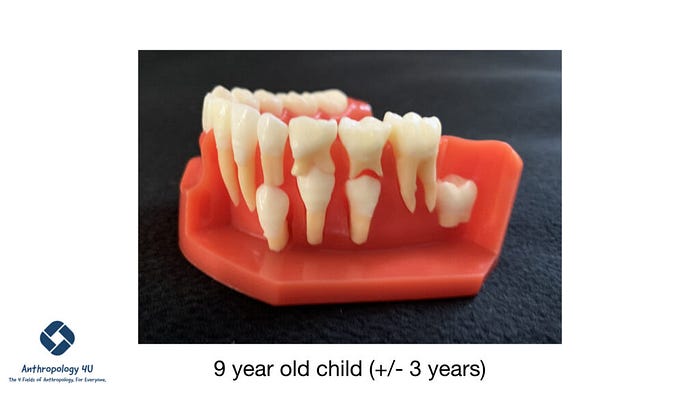
In this image, you can see that the permanent incisors have already grown in. The canine tooth is still a deciduous tooth, but you can see the permanent canine is already formed under the gum line. The next two teeth are deciduous, but you can also see that the 2 permanent premolars are formed under the gum as well. And, the first molar has already erupted, but the second molar is still in the process of forming under the gum line. So, based on when teeth erupt and fall out, a Forensic Anthropologist can tell that this child is about 9 years old (plus or minus 3 years).
So, you can see just from these two examples how useful teeth can be to a Forensic Anthropologist!
Learn more
Want to learn more about teeth? You can view individual teeth in a great FREE Mac/iOS app called “Essential Skeleton 4.” I have used this app on a MacMini, iPad, and iPhone, so if you have a Mac device, the app should work fine. To view teeth, just click on a tooth, then click on “isolate” in the menu on the screen. Then, you can view the tooth from all angles, just by moving your mouse or your finger. Of course, you can also view all the bones in the body as well. I highly recommend this app! Here is the link.
There is also an Android version of the app, called “Essential Skeleton 3,” at this link. This version of the app is in XAPK format, and so you must download another app (called APKPure App) in order for it to work. See this article for details. Please note that I have NOT tested this version of the app since I don’t have access to Android devices. And, please also note that I do not control third-party sites, and so I cannot accept any liability for your use of any of the sites or apps I link to.
Want more advanced details on teeth and Forensic Anthropology? Check out this article from Nature, called “A look at forensic dentistry — Part 1: The role of teeth in the determination of human identity” at this link. You can even download a PDF of this article for free.
If you want to learn more about Forensic Anthropology, check out my previous blog post on one way to determine the sex of a skeleton.
Thanks for reading!
